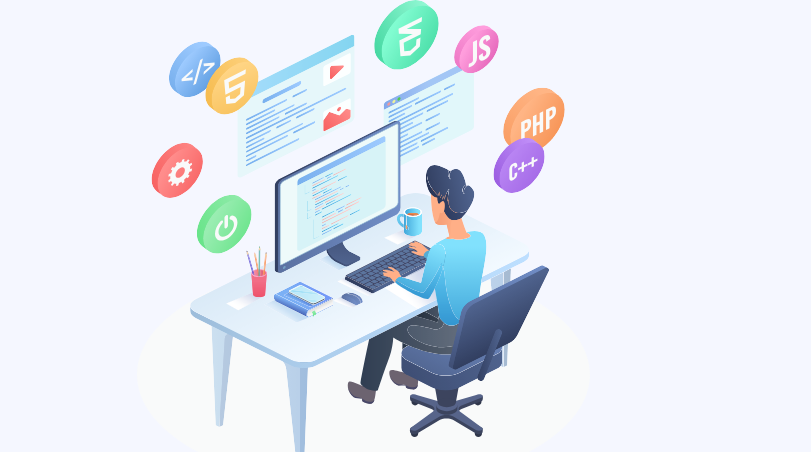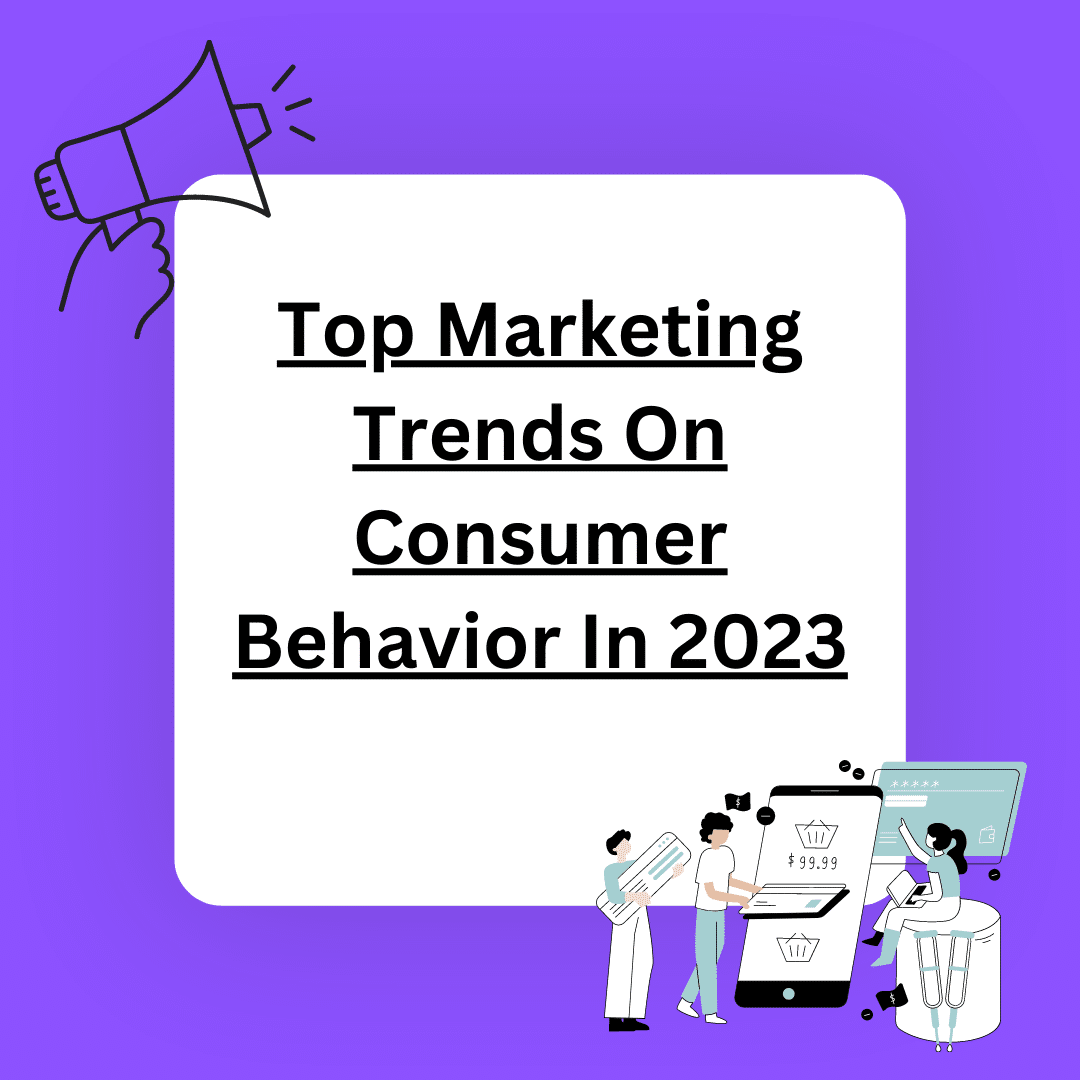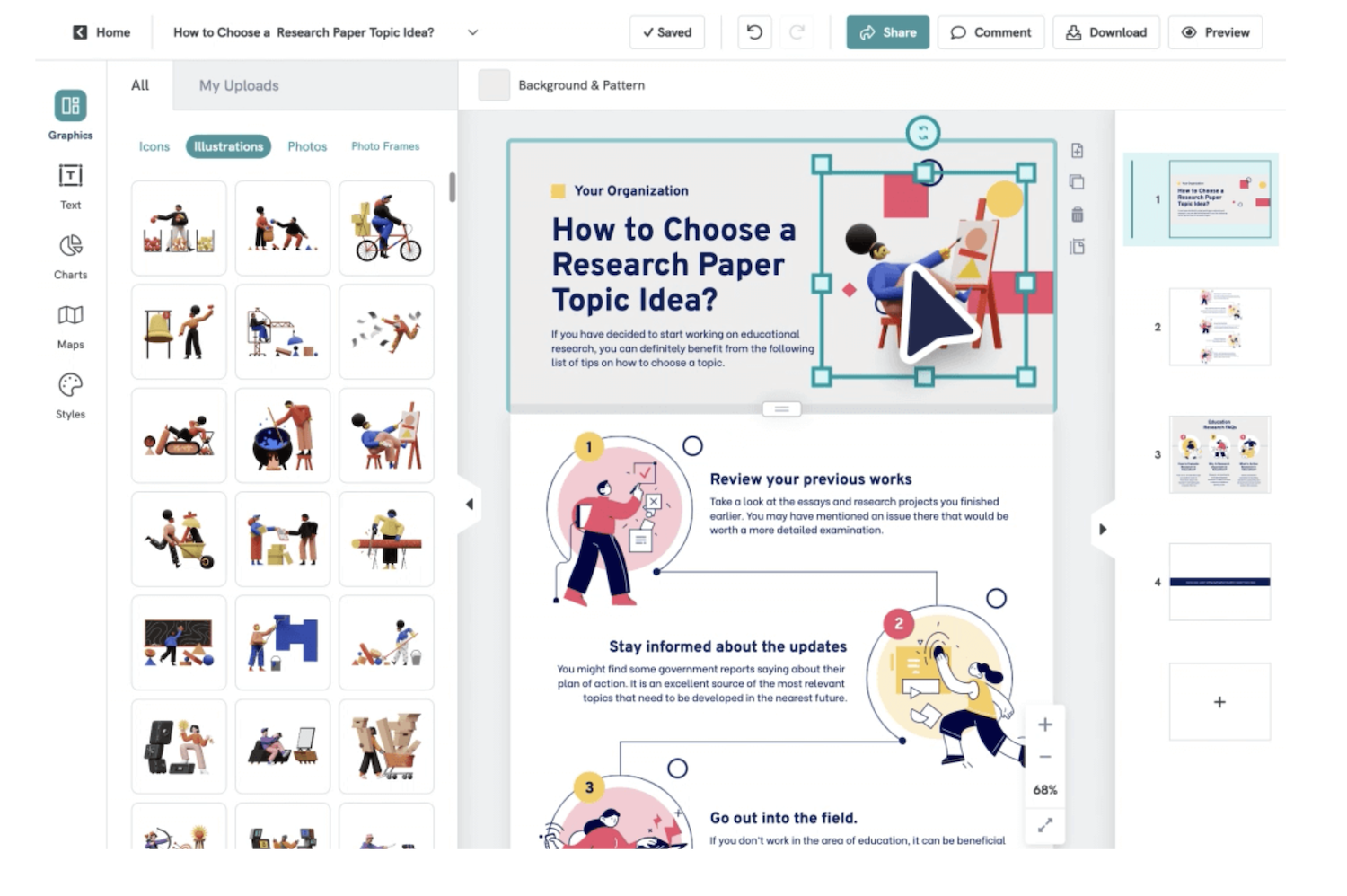Choosing the right content management system (CMS) can be a daunting task, given the myriad of options available in today’s digital landscape. One trend that has arisen is the utilization of headless CMS software, with estimates suggesting 15 top platforms to consider.
This blog post is designed as a guide to help you navigate through these options and understand how to select the best headless CMS for your business or project needs. Let’s plunge into this topic and demystify the world of headless CMS so you can make an informed decision!
Understanding Headless CMS Software
A headless CMS software refers to a content management system that separates the front-end presentation layer from the back-end content repository, allowing for more flexibility and customization in delivering content across various platforms and devices.
Unlike traditional CMS, which combines both the front-end and back-end functionalities in one package, headless CMS solely focuses on managing and organizing content, while leaving the design and presentation aspects to developers.
Definition and key features
A headless CMS is a tool to keep and send out website data. It uses an API, which is short for “Application Programming Interface”. This means the data can be used on any type of tech device.
It doesn’t have a front end, that’s why it’s called “headless”. With this kind of CMS, you decide how your site looks and works. Also, a top fact says Kontent is one good choice for this kind of work!
Difference between headless and traditional CMS
A headless CMS is different from a traditional CMS. With a traditional CMS, the front and back-end parts are tied together. That means the way data looks when you see it on a screen is made in the same place as where you put in that data.
But in a headless CMS, these two sides do not touch each other. You can use any kind of tool or program to show your data.
The biggest benefit of this is being able to send your content anywhere. A headless CMS works well with phones, smartwatches, and even billboards! Traditional CMS only lets you send content to websites which some people may find limiting.
Another point is safety: Since there’s no direct path from user-facing pages to your database or code on a headless platform like Strapi – one of the best for React- chances for attacks get lower than on traditional platforms.
Benefits of Headless CMS
Headless CMS offers several benefits that make it a popular choice among businesses. Firstly, it provides flexibility by decoupling the front end and back end, allowing for easy content distribution across various channels like websites, mobile apps, and IoT devices.
Secondly, headless CMS allows for cloud storage, ensuring that your content is securely stored and easily accessible from anywhere. Additionally, headless CMS provides enhanced security measures to protect your valuable data from potential breaches or attacks.
Another advantage is the ease of customization since developers can use any programming language or framework to build the front end while still managing content through the CMS backend.
Lastly, headless CMS often comes with a range of tools and integrations such as analytics and reporting features that help businesses optimize their content delivery strategies and improve overall performance.
Flexibility
Headless CMS software brings a lot of flexibility. You can pick what you want to use for the front end. This could be React, Nextjs, or other tools. It does not force you into one way of doing things.
Your team can use their preferred tools and languages. This helps them work fast and make great stuff for your site or app!
Cloud storage
Cloud storage is an important benefit offered by the best headless CMS platforms. With cloud storage, you can securely store and access your content from anywhere, without the need for physical servers or on-premises infrastructure.
This means that you don’t have to worry about managing your own storage space or dealing with potential hardware failures. Cloud-based CMS software, like Kontent, allows you to easily scale your storage needs as your content grows without any additional hassle.
By leveraging cloud storage, you can ensure that your content is always available and accessible to your team and users whenever they need it.
Security
Security is a crucial factor to consider when choosing headless CMS software. With the increasing number of cyber threats, it is important to ensure that your content management system has robust security measures in place.
Look for headless CMS platforms that offer features like encryption, user authentication, and role-based access control. These features will help protect your data from unauthorized access and keep it safe.
Additionally, choose a CMS platform that regularly updates its security protocols and patches any vulnerabilities. This will ensure that you have the latest protection against emerging threats.
Ease of customization
Headless CMS software offers ease of customization, allowing businesses to tailor their content management system based on their unique needs and requirements. With headless CMS, you have the flexibility to design and develop your frontend independently from the backend.
This means you can customize your website or application’s look and feel without restrictions imposed by a traditional CMS. Whether it’s changing the layout, adding new features, or integrating with other tools and services, headless CMS empowers you to create a personalized and scalable content management solution that aligns perfectly with your business goals.
Availability of tools
The availability of tools is an important factor to consider when choosing the best headless CMS software. These tools can help you streamline your content management processes and enhance your overall productivity.
Look for platforms that offer a wide range of built-in tools, such as content editors, design templates, image and video libraries, and SEO optimization features. Additionally, check if the CMS supports integrations with other popular tools like analytics platforms or customer relationship management systems.
Having access to these tools can make it easier for you to manage your content effectively and deliver a seamless user experience across different channels.
Top Features to Look for in a Headless CMS
When choosing a headless CMS software, there are several key features to consider. Scalability is important to ensure that the platform can handle your growing content needs. Integrations with third-party services and tools allow for seamless connectivity between different systems.
Multi-channel publishing capabilities enable you to distribute your content across various platforms and devices. Content delivery optimization ensures fast and efficient delivery of your content to users.
Lastly, analytics and reporting provide valuable insights into how your content is performing and help you make data-driven decisions.
Scalability
Scalability is an important factor to consider when choosing a headless CMS software. It refers to the ability of the CMS platform to handle increasing amounts of content and traffic without compromising performance.
As your business grows and more users access your website or application, you need a scalable headless CMS that can support the increased demand.
A scalable headless CMS ensures that your website or application remains responsive even during peak usage periods. It allows you to easily add new content, manage large volumes of data, and deliver it quickly to users across different devices.
This scalability is crucial for businesses that expect growth in their audience or plan on expanding their digital presence.
When evaluating headless CMS options, look for platforms that offer horizontal scaling capabilities, meaning they can distribute the workload across multiple servers as needed. Cloud-based solutions are often preferred as they provide automatic scaling based on demand, ensuring optimal performance at all times.
Integrations
Integrations are an important factor to consider when choosing the best headless CMS software. The ability of a CMS platform to integrate with other tools and systems can greatly enhance its functionality and effectiveness.
Look for a headless CMS that offers seamless integrations with popular marketing automation, e-commerce, analytics, and customer relationship management (CRM) platforms. This will allow you to streamline your workflows, improve data sharing, and create personalized experiences for your audience.
Keep in mind that different CMS platforms may offer different integration options, so make sure to research which ones align with your specific needs.
Multi-channel publishing
Multi-channel publishing is a key feature to consider when choosing the best headless CMS software. It allows you to publish your content across different channels, such as websites, mobile apps, social media platforms, and more.
This means that you can reach your audience wherever they are and provide a consistent experience across all channels. With multi-channel publishing, you can easily manage and update your content in one central location and have it automatically optimized for each channel.
This saves time and ensures that your content is always up-to-date and accessible to your audience on their preferred platform.
Content delivery optimization
Content delivery optimization is an important feature to consider when choosing a headless CMS software. It ensures that your content is delivered quickly and efficiently to your audience.
By optimizing the delivery process, you can improve user experience, reduce bounce rates, and increase website performance. This is achieved through various techniques such as caching, content compression, CDN integration, and image optimization.
The top headless CMS platforms offer robust content delivery optimization capabilities to help you deliver your content faster and enhance the overall performance of your website or application.
Analytics and reporting
Headless CMS software offers powerful analytics and reporting capabilities that can provide valuable insights into your content performance. With these features, you can track data such as page views, engagement metrics, and user behavior to understand how your content is performing across different channels.
This information helps you make informed decisions about optimizing your content strategy and improving user experience. Additionally, by analyzing the data from analytics and reporting tools, you can identify trends, spot opportunities for growth, and measure the effectiveness of your marketing efforts.
Overall, having robust analytics and reporting features in a headless CMS platform enables you to make data-driven decisions that drive better results for your business.
How to Choose the Best Headless CMS Software
To choose the best headless CMS software, start by determining your business needs and goals. Consider factors such as the level of support and onboarding provided by the CMS provider, as well as infrastructure and API response time.
Research and compare different headless CMS options, request demos, and ask for references to gather more insights into their capabilities. With a thorough evaluation process, you can find the optimal headless CMS platform that aligns with your requirements.
Determine your business needs
To choose the best headless CMS software for your business, you need to think about what your specific needs are. Consider factors like the size of your team, your budget, and the goals you want to achieve with the CMS.
Think about what features and functionalities are important to you. Do you need scalability? Do you require integrations with other tools? Are analytics and reporting capabilities essential for your business? By taking the time to assess your needs, you can make a more informed decision when selecting a headless CMS platform that aligns with your goals and requirements.
Consider support and onboarding
When choosing the best headless CMS software, it’s important to consider support and onboarding. Look for a platform that provides comprehensive support services to help you navigate any issues or challenges that may arise during implementation and use.
This includes access to technical assistance, documentation, tutorials, and a responsive customer support team. Additionally, consider the onboarding process offered by the CMS provider.
A user-friendly and well-guided onboarding experience can greatly contribute to a smooth transition and faster adoption of the new CMS software within your organization.
Evaluate infrastructure and API response time
When choosing the best headless CMS software, it’s important to evaluate the infrastructure and API response time. This means considering how fast and reliable the system is in delivering content to your website or application.
You want a CMS platform that can handle high traffic and provide seamless user experiences. Additionally, you should look for a system with a robust API that allows for easy integration with other tools and services.
The faster the API response time, the smoother your website or application will function. By evaluating these factors, you can ensure that you choose a headless CMS software that meets your performance requirements and delivers content efficiently to your users.
Research the top headless CMS options
In order to find the best headless CMS for your needs, it is important to thoroughly research the top options available. One popular choice is Kontent, a cloud-based SaaS platform that allows you to create digital experiences across different devices.
Another option to consider is Sanity, which offers flexibility and ease of customization. Strapi is highly relevant for those looking for a headless CMS software specifically for React projects.
Contentstack, dotCMS, Contentful, and Magnolia are also among the top headless CMS platforms. By researching these options and comparing their features and benefits, you can make an informed decision on selecting the right headless CMS software for your business needs.
Request demos and ask for references
To choose the best headless CMS software, it’s important to request demos and ask for references. By requesting demos, you can see firsthand how the CMS platform works and if it meets your needs.
It allows you to test its features, user interface, and usability. Additionally, asking for references from other users or customers who have used the CMS software can give you valuable insights about their experience with the platform.
They can share their thoughts on its performance, support services, and overall satisfaction. This information can help you make an informed decision about which headless CMS software is the best fit for your business.
Conclusion
In conclusion, choosing the best headless CMS software requires careful consideration of your business needs and goals. Evaluate factors like support and onboarding, infrastructure, API response time, and available features.
Research different options, request demos, and ask for references to make an informed decision. By selecting the most suitable headless CMS platform for your requirements, you can ensure personalized and scalable content management solutions that will futureproof your digital experiences.



